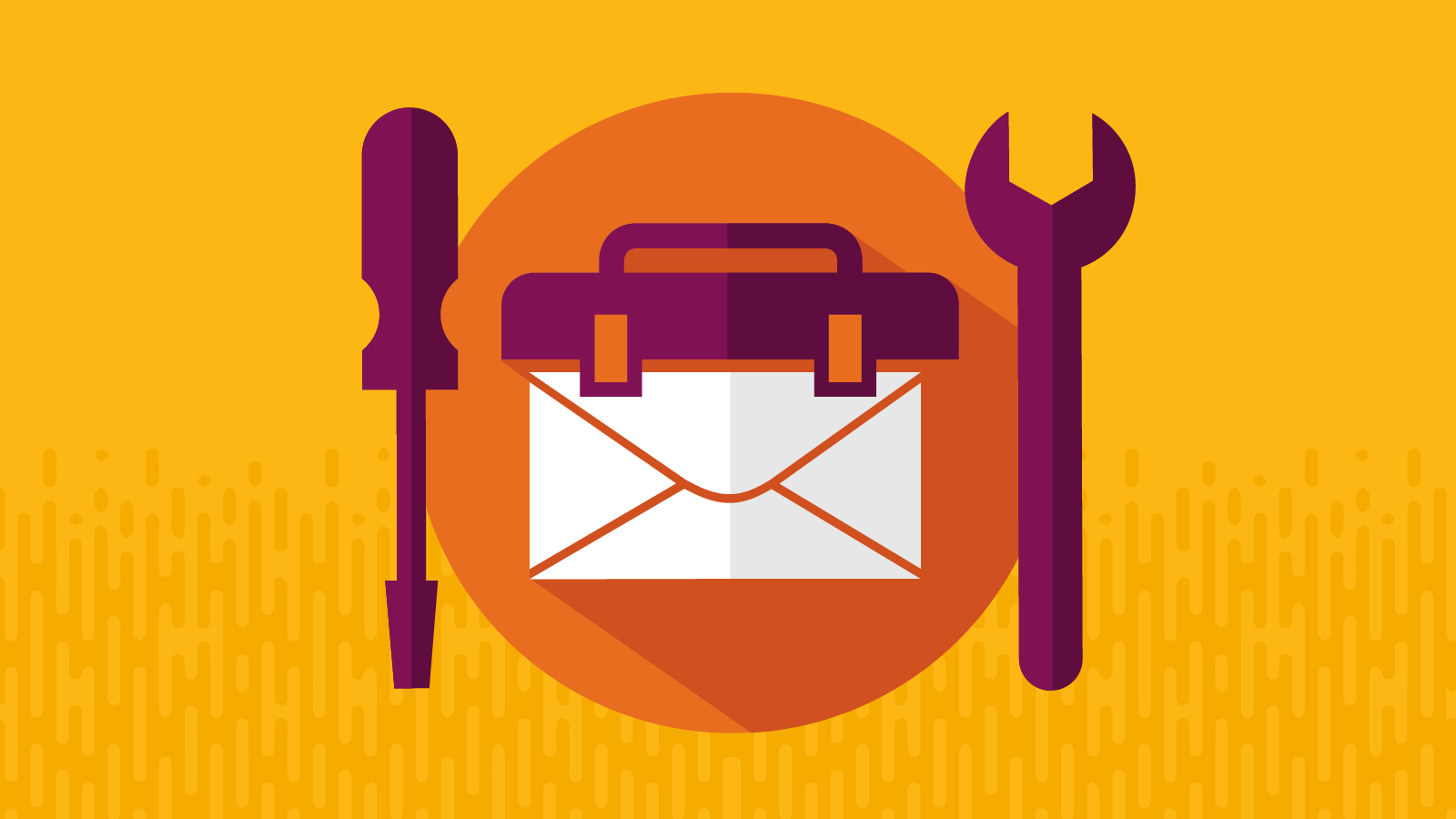Email Marketing
Remote Work Tools: What’s Best for Email Marketing Teams?

Email Marketing

Does your email team have the best remote work tools in place to support day-to-day activities, big projects, and ongoing collaboration?
Even before 2020 changed everything and more of us started working from home, marketing teams were already using plenty of remote work tools. We may have been sitting in a cubicle or surrounded by colleagues in nearby offices, but nearly everyone used messaging apps, project management software, and other forms of digital collaboration.
Still, the pandemic accelerated a shift to home offices, distributed teams, and the need to collaborate on projects across multiple time zones. These tools aren’t just “nice to have” anymore, they’re essential to getting everything done!
Our special report, Email Marketing and the Next Normal, captures many of the changes email teams face. That includes identifying new processes for working together effectively and efficiently whether you’re in a home office, a co-working space, or a coffee shop.
As demand for remote work tools rose — so did the supply. That means you have lots of options, including alternatives to your existing solutions. If you’re evaluating marketing technology and remote work tools, we’ve organized some of the most popular options into specific categories.
By now, it seems way too obvious to recommend things like Zoom and Slack. These sorts of tools have become ubiquitous and vital to remote work communication. But moving forward, you may want to reconsider your options.
While Zoom has the video conferencing market cornered, for now, G2 lists plenty of alternatives. Microsoft Teams emerged as a major Slack competitor, partly because so many companies are already using other Microsoft products. If your team uses Google Workspace (aka G-Suite), Google Chat and Google Meet may be your preferred flavor of remote communication.
In most cases, these digital solutions will be chosen at an organizational level. However, email teams can look for ways to enhance messaging and conferencing tools with add-ons and integrations that make them do more for you.
The Zoom Marketplace is packed with options as is the Slack apps directory. For example, the Toast app pulls GitHub reminders into Slack to keep email developers on track using a fun user experience. Slack Apps like Standup Buddy automate daily check-ins so there’s one less standing meeting on your plate.
If noisy homes are distracting people during Zoom calls, try using an app like Krisp, which is designed to cancel background noise such as barking dogs, crying babies, and keyboard clicks.
While project management software was the norm before folks set up home offices, it’s become imperative in remote work culture. That’s especially true for email marketing teams with lots of ongoing tasks and projects to launch and manage.
Here are some of the usual suspects for project management, in no particular order:
There are also remote workplace suites like Zoho Remotely and Kissflow that combine a collection of project management solutions into packages.
As with your communication tools, choosing remote project management software may not be up to you. But you will need to get the most out of this technology if you want to manage a remote email team successfully. Email marketing projects often require working with other members of the marketing department and colleagues across the organization. Having a hub for project management is essential.
If you are involved in choosing project management solutions for your company, our report, Getting the Most from Marketing Technology, suggests that best-in-class marketers are looking closely at the ease of use, ability to customize, and ability to automate when evaluating options.
But the report also found integration is one of the three most-cited challenges of Martech implementation. So, make sure the ability to integrate with your existing tech stack is part of your evaluation process for any remote work tool.
Remember those brainstorming sessions in conference rooms with huge whiteboards and day-long, off-site meetings where Post-it notes covered the walls? That’s not happening so much anymore.

When brainstorming happens remotely, we’re using options such as the digital whiteboards we listed in our article on the best tools for customer journey mapping. In addition to popular options such as Miro and MURAL, there are applications designed specifically for digital brainstorming sessions.
Here are several to check out:
These mind-mapping tools are ideal for brainstorming new email automations and nurture sequences as a team. Hash things out with messy/creative ideas first, then streamline the strategy before you build things out in your marketing automation platform.
For explaining big ideas across a remote organization, check out P2 from Automattic. It’s basically a way to create internal blogs with features to track progress, take surveys, share files, and more. You can organize specific P2s around teams, projects, meeting recaps, and other topics.
Persuasive copy, eye-catching visuals, and rock-solid code … all three need to come together to build email perfection. After you’ve established a strategy, how will you collaborate to create campaigns as a remote email team?
Figma has emerged as a leader in collaborative design software, partly because it’s an excellent way to connect the work of developers and designers. But it’s not the only player in the game. Other collaborative design and prototyping tools include:
Use tools like this to prototype amazing interactive email designs as a team. Collaborative design tools are also ideal for web and product/software development. So, if your budget is tight, see if you can get buy-in by getting other departments to request a tool like these.
Does working from home make us more or less productive? The jury is still out on that one. Some studies suggest remote work during the pandemic had no impact on productivity, and in certain companies productivity actually increased.
But, according to a Harvard Business Review article, the pandemic caused the corporate productivity gap to widen. Whether or not your team is productive is less contingent on being remote vs. in the workplace than it is on other factors. As the HBR article states:
Covid-19 has affected all three drivers of workforce productivity — time, talent and energy. But the best have felt the impact very differently from the rest. The best companies have minimized wasted time and kept employees focused; the rest have not.
Dishwashers to load, laundry to fold, remote learning, annoying pets, errands to run, social media and smartphones screaming for your attention — all these distractions and more can be tough to ignore when you work from home. So how do email teams stay focused?
Pomodoro timers: These apps use a productivity technique that breaks up work into 30-minute increments with 25 minutes of focus time and 5-minute breaks. (So, you have time for a quick dopamine hit while checking your Instagram)
To-do list apps: Sure, you can do it the old-fashioned way with pen and paper, but apps like these might make keeping track of daily duties easier. Plus, you’ll never spill coffee or drip ketchup on a digital to-do list.
Time tracking apps: These simple applications are an effective way to see how you and the rest of the email team are prioritizing your days. They’re also useful for freelance email marketers and agencies that need to track hours spent on work for various clients.
There are also productivity apps like Serene, which helps people avoid detrimental multitasking. The point is to concentrate on an important, singular task. Mac users can utilize Serene to block certain websites and apps, silence their phones, and even play music that promotes focus. It comes with a session timer, to-do list functionality, and a daily planner.
If you are a multitasker, an app like RescueTime has many similar features, but it helps teams manage various tasks throughout the day. The brand also offers a productivity training course if your team needs a little guidance.
The software I Done This is similar to previously mentioned Slack bots used for check-ins and status updates. It keeps track of all the updates delivers reports to managers.
One of the challenges we face as teams become more distributed is scheduling everything at times that are convenient for everyone. If you have team members working all over the world, you may never make everyone happy, but you can get close with the right types of apps.
Calendly is a flexible scheduling app that connects with Outlook, Office 365, Google, and iCloud so you can set easily coordinate meeting setup across time zones. Calendly also has Team Pages for organizing events and even lets you build in buffer time to avoid meeting overlap.
Spacetime is a solution that lets you quickly see when your entire team and others in a global organization are typically online and working. It also integrates with Slack.
If your team uses Gmail for internal communication, you can try Boomerang for Gmail to send emails to colleagues at convenient times rather than bugging them when they’re supposed to be away from work. Send it Later does the same thing for scheduling Slack messages.
World Time Buddy is a simple tool that quickly lets you see a bunch of different time zones for different cities all at once. The World Clock Meeting Planner is a similar tool.
Another challenge of remote work is keeping teams connected and keeping spirits up when there’s no more breakroom banter, water cooler chats, and other chances to socialize. Just like every other topic in this article, there are ways to digitize culture initiatives for remote teams.
Need a cool way to recognize people who are going the extra mile? Use an app like Karma, which integrates with Slack and Microsoft Teams, to encourage the giving of kudos. HeyTaco is another quirky option for peer recognition that uses taco emojis as a form of digital currency.
Donut is a fun app you can use as a digital water cooler, sparking interesting conversations among remote coworkers so folks get to know each other a little better. It sends out a question of the day that brings up funny stories and friendly debates.
Discord is chat and VoIP software that’s surging in popularity. It was originally created to let gamers talk in groups while they played together. However, its use has expanded. Some companies are replacing Slack with Discord. But it’s also a fun way to create “digital breakrooms” or places where people can pop in and chat about projects as they work together remotely.
Want to keep tabs on your team’s mood? Workable has a list of tools for tracking employee morale.
Email teams that have switched from offices to remote work settings also need a way to test, optimize, review, and approve campaigns. That’s why Email on Acid’s testing platform includes a suite of tools for remote collaboration and team management. Plus, Campaign Precheck is an automated pre-send email checklist that streamlines everything you need to do before hitting send.
First, an Email Marketing Specialist can optimize inbox display, run through content checks, and look for issues that a Developer can find-and-fix using our Email Editor. Next, the Developer can run Email Previews on more than 90 clients and devices, ensuring the campaign renders correctly for every subscriber. Then, test results can be shared with the entire team, and co-workers have the ability to comment on previews for final revisions.
Whether you’re at corporate headquarters or the kitchen counter, Email on Acid is designed to help you deliver email perfection!
Remote work tools for marketers are just the beginning. There are all sorts of tech solutions for email marketers to consider. What’s the right way to approach the process of identifying solutions, evaluating your options, and implementing marketing technology?
See the results from a survey of best-in-class marketers when you download our report, Getting the Most from Marketing Technology.
